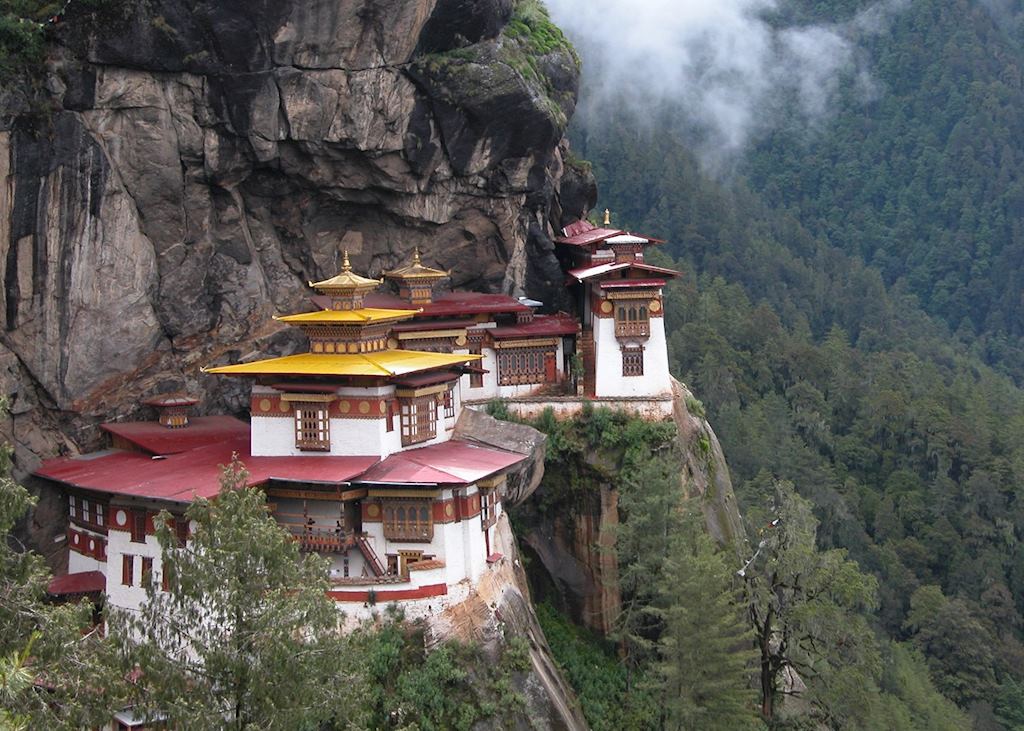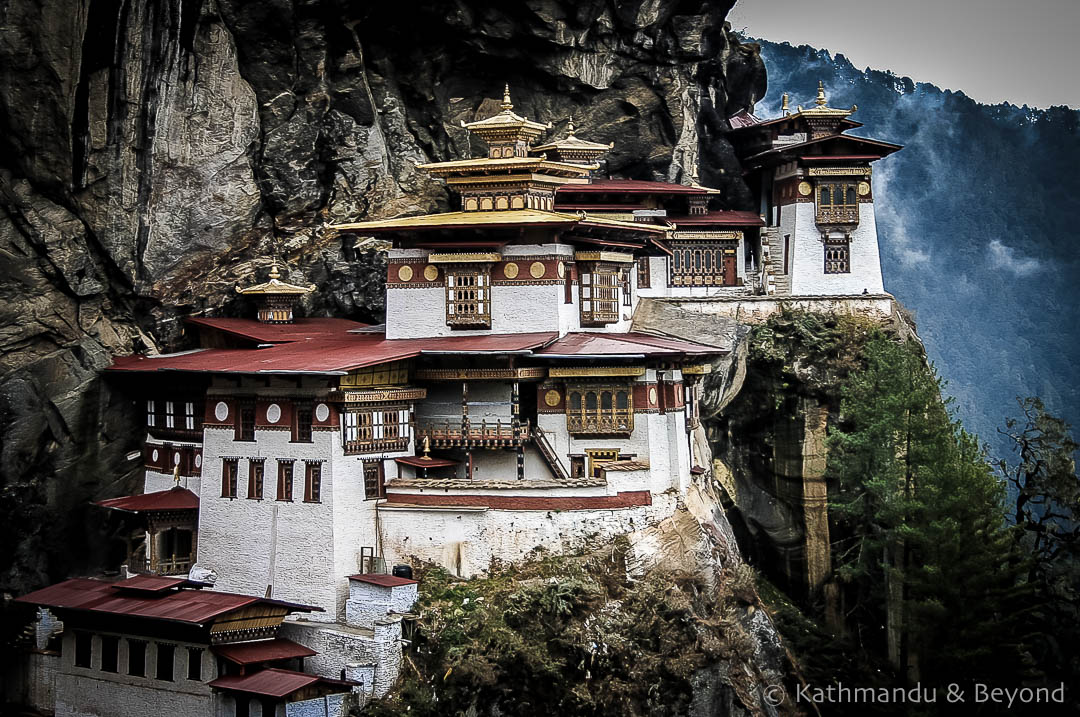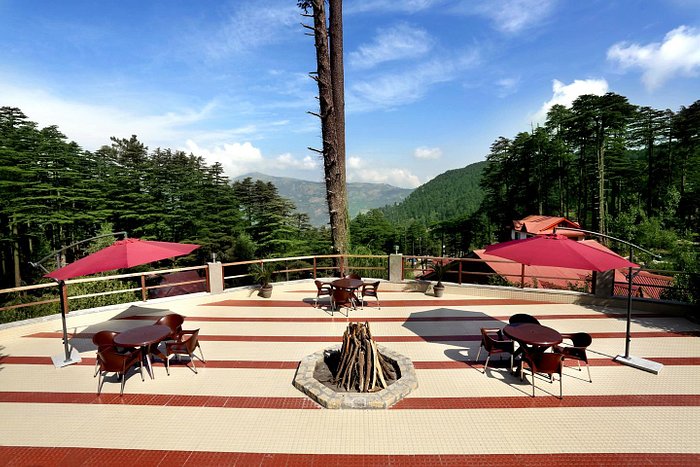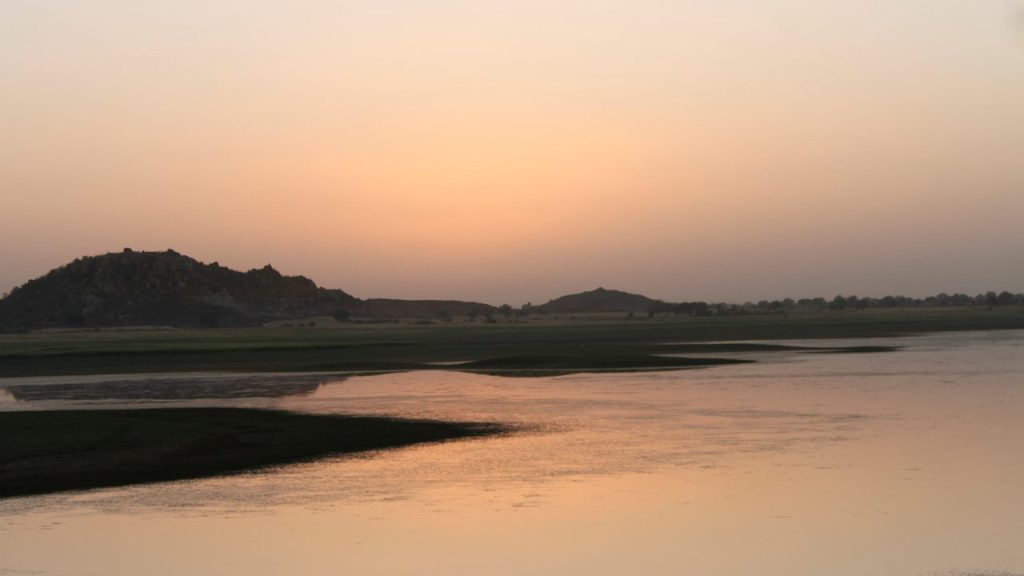Tigersnest Temple in Paro is a marvel of architecture and spirituality. Nestled on a cliff, it’s a sight to behold.
Imagine a place where the mountains whisper ancient secrets and the air is thick with history. Tigersnest Temple, also known as Paro Taktsang, stands majestically on a cliffside, 10,000 feet above sea level. This Bhutanese gem is not just a visual masterpiece but a spiritual haven that has captivated travelers and pilgrims alike.
The temple’s unique location and serene atmosphere make it a must-visit destination. Whether you’re an adventurer or a seeker of peace, Tigersnest Temple offers an experience that connects you to nature and history. Let’s delve deeper into what makes this temple so enchanting.

Credit: www.audleytravel.com
History Of Tigersnest Temple
Tigersnest Temple, also known as Paro Taktsang, is one of Bhutan’s most iconic landmarks. Perched on the edge of a cliff, 10,000 feet above sea level, this sacred site draws visitors from around the globe. Exploring its history unveils fascinating origins and legends, as well as its profound historical significance.
Origins And Legends
The origins of Tigersnest Temple are steeped in mysticism and awe. It is believed that Guru Padmasambhava, the founder of Tibetan Buddhism, flew to this very spot on the back of a tigress in the 8th century. He meditated in a cave for three years, three months, three weeks, three days, and three hours. This legendary journey is why the temple is named Tigersnest.
Imagine standing at the edge of the cliff, feeling the same sense of wonder and spiritual connection as Guru Padmasambhava. The temple is a testament to the power of faith and the enduring legacy of Buddhist teachings. As you walk through its halls, you can almost hear the whispers of ancient prayers.
Historical Significance
Beyond its mystical origins, Tigersnest Temple holds immense historical importance. Built in 1692, the temple has been a center for meditation and pilgrimage for centuries. It symbolizes the triumph of spiritual dedication and the resilience of Bhutanese culture.
During my visit, I discovered that the temple had been destroyed by fire in 1998. The Bhutanese government and local communities rallied together to rebuild it, showcasing their commitment to preserving their heritage. This act of restoration is a powerful reminder of the temple’s significance to the people of Bhutan.
Walking through Tigersnest Temple, you can feel the weight of history. Each mural and statue tells a story, each corner holds a secret. How do you think this temple has influenced the spiritual lives of those who visit? The historical significance of Tigersnest Temple is not just in its age, but in the continuous thread of devotion that runs through its existence.
When you visit Tigersnest Temple, you’re not just exploring a landmark; you’re stepping into a living history. The stories, legends, and dedication that built this temple still resonate today. It’s a place where history and spirituality intertwine, offering a unique glimpse into Bhutan’s soul.
What thoughts or feelings do you experience when you think about places with such deep historical roots? Tigersnest Temple challenges you to look beyond the physical structure and connect with the spirit of history that it embodies.
Architectural Marvels
Tigersnest Temple Paro is a true architectural marvel. Nestled on a cliffside, this temple captures the imagination with its stunning design and unique features. Let’s explore the architectural wonders that make this site extraordinary.
Design And Structure
The temple’s design blends seamlessly with the cliff. Built in 1692, it stands at 3,120 meters above sea level. The structure is both elegant and sturdy. The main building is made of stone, wood, and plaster. Each element chosen for durability and beauty.
The temple complex has several buildings. They are connected by bridges and stairways. The layout is intricate. It creates a sense of mystery and wonder. The architecture reflects the Buddhist principles of harmony and peace.
Unique Features
One unique feature is the temple’s location. It clings to the cliffside, appearing to float in the clouds. This gives it a magical quality. Visitors often feel a sense of awe and reverence.
Inside, the temple houses beautiful murals. These depict the life of Guru Rinpoche. The artwork is intricate and tells stories of spirituality. There are also sacred relics and statues. Each piece adds to the temple’s sacred atmosphere.
The temple has several meditation caves. These caves offer a serene place for contemplation. They are said to be where Guru Rinpoche meditated. This adds to the temple’s spiritual significance.
Spiritual Significance
Nestled high in the Himalayas, Tigersnest Temple in Paro, Bhutan, is not just a feast for the eyes; it’s a sanctuary for the soul. The temple’s spiritual significance resonates deeply with those who visit, inviting you to immerse yourself in its serene atmosphere and rich traditions. But what makes Tigersnest Temple so spiritually significant? Let’s explore.
Sacred Relics
Tigersnest Temple is home to numerous sacred relics that are believed to hold immense spiritual power. These relics include ancient scriptures, artifacts, and statues of deities that have been preserved for centuries. When you stand before these relics, you can almost feel the weight of history and devotion in the air.
During my visit, I was particularly struck by a statue of Guru Rinpoche, the founder of Tibetan Buddhism. Seeing it up close, I felt a profound connection to the spiritual essence that permeates the temple. Many visitors report similar experiences, feeling a sense of peace and introspection when they encounter these sacred items.
Religious Practices
The temple is not just a place to admire relics; it’s a living, breathing center of religious practice. Monks and devotees engage in daily rituals that fill the air with chants and prayers, creating a deeply moving atmosphere. You’ll witness offerings of butter lamps, incense, and flowers, all meant to honor the deities and seek their blessings.
One practice that stood out to me was the ritual of circumambulation, where devotees walk clockwise around the temple, chanting prayers. It’s a simple yet powerful act that symbolizes the cycles of life and the pursuit of enlightenment. Observing this practice made me reflect on my own spiritual journey and the ways I seek meaning in everyday life.
Have you ever participated in a religious ritual that changed your perspective? Visiting Tigersnest Temple offers a unique opportunity to engage with practices that could deepen your understanding of spirituality.
Tigersnest Temple is more than a breathtaking view; it’s a beacon of spiritual significance. Whether you’re drawn to its sacred relics or its vibrant religious practices, the temple offers a chance to connect with something greater than yourself.

Credit: www.kathmanduandbeyond.com
Journey To Tigersnest
The journey to Tigersnest Temple in Paro is an adventure like no other. Nestled on a cliffside, this sacred site draws travelers from around the world. The trek to this stunning monastery offers breathtaking views and a chance to immerse yourself in Bhutanese culture.
Travel Routes
Reaching Paro is the first step in your journey. Most travelers fly into Paro International Airport, Bhutan’s only international airport. From there, it’s a short drive to the base of the trekking trail. If you prefer, hire a local guide for a more enriching experience. They can share insights about the region and its history.
Trekking Experience
The trek to Tigersnest Temple is both challenging and rewarding. The trail is about 4 miles round trip and can take up to 5 hours. Start early to avoid the midday heat. The path is steep in places but well-maintained. Stop at the viewpoints along the way for stunning photo opportunities. Remember to stay hydrated and take breaks as needed.
Halfway up, you’ll find a small cafeteria. It’s a great spot to rest and enjoy the views. From there, the final stretch leads to the temple itself. As you approach, the sight of Tigersnest clinging to the cliffside is awe-inspiring.
Upon reaching the temple, take time to explore and reflect. The serene atmosphere and rich history make the trek worthwhile. Respect the customs and remove your shoes before entering the sacred spaces.
The journey back down is easier and quicker. You will leave with a sense of accomplishment and unforgettable memories. The journey to Tigersnest Temple is truly a once-in-a-lifetime experience.
Cultural Importance
Tigersnest Temple, or Paro Taktsang, holds immense cultural significance for the people of Bhutan. Nestled on a cliffside 3,000 meters above sea level, this sacred site is not just a marvel of architecture, but a symbol of Bhutanese spiritual heritage. Visiting the temple offers you a deep dive into the rich tapestry of Bhutanese culture, from religious practices to community events.
Festivals And Events
Attending a festival at Tigersnest Temple is a unique experience you won’t forget. One of the most significant events is the Paro Tshechu, a religious festival held annually. During this festival, you can witness masked dances, known as “cham,” performed by monks and laypeople. These dances are not just for entertainment; they are believed to invoke deities and offer blessings to the attendees.
Imagine standing amidst the crowd, feeling the rhythmic drum beats and watching the vibrant costumes swirl around. You can almost feel the spiritual energy in the air. These festivals are a fantastic way to immerse yourself in Bhutanese culture and understand the role of spirituality in everyday life.
Local Traditions
Local traditions in Paro extend beyond the temple walls. For instance, it’s customary for pilgrims to hike up to Tigersnest Temple barefoot, as a sign of respect and humility. While this might seem daunting, many locals believe the physical challenge purifies the spirit and enhances the pilgrimage experience.
Another interesting tradition is the offering of butter lamps. These lamps symbolize the dispelling of darkness and ignorance. You can participate in this tradition by lighting a lamp, making a wish, or offering a prayer. It’s a simple yet profound way to connect with the spiritual essence of the temple.
Have you ever considered how participating in these traditions might change your perspective? Engaging in local customs can provide you with unique insights into Bhutanese life and offer a deeper appreciation of their values.
By understanding the cultural importance of Tigersnest Temple, you can enrich your visit and leave with more than just photos. You’ll take home a piece of Bhutanese spirit and tradition, making your journey truly unforgettable.

Credit: www.culturaobscura.com
Visitor Information
Tigersnest Temple Paro, or Paro Taktsang, is a must-visit in Bhutan. This sacred Buddhist site offers breathtaking views and a serene atmosphere. To make the most of your visit, keep these essential details in mind.
Best Time To Visit
The best months to visit are March to May and September to November. During these times, the weather is pleasant and the skies are clear. You will enjoy the best views of the temple and the surrounding valley.
Avoid the monsoon season from June to August. The trails can be slippery and unsafe. Winter months, December to February, are cold and may have snow. This could make the hike more challenging.
Travel Tips
Wear comfortable hiking shoes. The trail to Tigersnest Temple is steep and rocky. Carry enough water and snacks. There are no shops on the way. A walking stick can help with balance during the hike.
Start your hike early in the morning. This way, you can avoid the midday heat. Hire a local guide for a richer experience. They can share stories and history about the temple. Do not forget your camera. The views are stunning and you will want to capture the memories.
Respect the local customs and traditions. Dress modestly and cover your shoulders and knees. Photography inside the temple is not allowed. Be mindful and quiet to respect the spiritual atmosphere.
Conservation Efforts
Tigersnest Temple Paro, also known as Paro Taktsang, is a sacred site. It is a symbol of Bhutan’s cultural heritage. Preserving this temple is vital for future generations.
Preservation Initiatives
The Bhutanese government has taken steps to protect Tigersnest Temple. They have restored damaged parts of the structure. Local craftspeople use traditional methods for repairs. This keeps the temple’s original charm intact.
Regular maintenance is also a priority. Monks and volunteers help clean and maintain the site. Their dedication ensures the temple remains in good condition. This communal effort fosters a sense of pride and responsibility.
Sustainable Tourism
Tourism in Bhutan is regulated to minimize impact. The government limits the number of visitors to the temple. This helps preserve the site’s natural beauty. It also reduces wear and tear on the temple.
Tourists are encouraged to follow guidelines. They must respect local customs and the environment. Educational programs inform visitors about the temple’s significance. These efforts promote sustainable tourism practices.
Local businesses also play a role. Eco-friendly services and products are offered to tourists. This approach supports both conservation and the local economy. It’s a win-win for everyone involved.
Personal Reflections
Visiting Tigersnest Temple in Paro is a unique experience. The temple clings to the cliffside, offering breathtaking views. Each step of the hike reveals more of its beauty. Reflecting on this journey, travelers often find deep personal insights.
Visitor Experiences
Many visitors describe the hike as challenging but rewarding. The path winds through forests and past waterfalls. Each turn reveals a new perspective of the temple. Reaching the top feels like a true accomplishment.
Some say the air feels different near the temple. It’s fresher, almost sacred. The silence adds to the feeling of peace. Time seems to stand still. The temple’s serene environment helps visitors connect with their inner selves.
Impact On Travelers
The journey to Tigersnest Temple often leaves a lasting impression. Many travelers find it a deeply spiritual experience. The temple’s history and significance resonate with visitors. They leave with a sense of fulfillment and clarity.
For some, the temple visit becomes a turning point. It inspires life changes and new perspectives. The beauty and serenity of the temple linger in their memories. These reflections often lead to personal growth and a deeper appreciation for life’s simple moments.
Frequently Asked Questions
How Difficult Is The Hike To Tiger’s Nest, Bhutan?
The hike to Tiger’s Nest in Bhutan is moderately challenging. It takes about 4-5 hours round trip. The trail is steep and rocky.
How Much Does It Cost To Go To Tiger’s Nest Monastery?
The entry fee for Tiger’s Nest monastery is $25 for international tourists. Bhutanese nationals and residents can enter for free.
What Is The Story Behind Tiger Nest Bhutan?
Tiger Nest Bhutan, also known as Paro Taktsang, is a sacred monastery. Legend says Guru Rinpoche flew there on a tigress. He meditated in a cave for three years, three months, three weeks, three days, and three hours. This site is a significant pilgrimage location for Buddhists.
What Do People Think About Paro Taktsang?
Visitors find Paro Taktsang breathtaking and spiritually enriching. They admire its stunning views and architectural beauty. Many describe it as a must-visit in Bhutan.
Conclusion
Tigersnest Temple in Paro is a marvel worth visiting. Its unique location, perched on a cliff, offers breathtaking views. The journey to the temple itself is an adventure. The rich history and serene atmosphere create unforgettable memories. Exploring Tigersnest Temple connects you to Bhutan’s spiritual essence.
Your visit here will be a cherished experience. Make sure to capture the beauty and tranquility.
{ “@context”: “https://schema.org”, “@type”: “FAQPage”, “mainEntity”: [ { “@type”: “Question”, “name”: “How difficult is the hike to Tiger’s Nest, Bhutan?”, “acceptedAnswer”: { “@type”: “Answer”, “text”: “The hike to Tiger’s Nest in Bhutan is moderately challenging. It takes about 4-5 hours round trip. The trail is steep and rocky.” } } , { “@type”: “Question”, “name”: “How much does it cost to go to Tiger’s Nest monastery?”, “acceptedAnswer”: { “@type”: “Answer”, “text”: “The entry fee for Tiger’s Nest monastery is $25 for international tourists. Bhutanese nationals and residents can enter for free.” } } , { “@type”: “Question”, “name”: “What is the story behind Tiger Nest Bhutan?”, “acceptedAnswer”: { “@type”: “Answer”, “text”: “Tiger Nest Bhutan, also known as Paro Taktsang, is a sacred monastery. Legend says Guru Rinpoche flew there on a tigress. He meditated in a cave for three years, three months, three weeks, three days, and three hours. This site is a significant pilgrimage location for Buddhists.” } } , { “@type”: “Question”, “name”: “What do people think about Paro Taktsang?”, “acceptedAnswer”: { “@type”: “Answer”, “text”: “Visitors find Paro Taktsang breathtaking and spiritually enriching. They admire its stunning views and architectural beauty. Many describe it as a must-visit in Bhutan.” } } ] }




